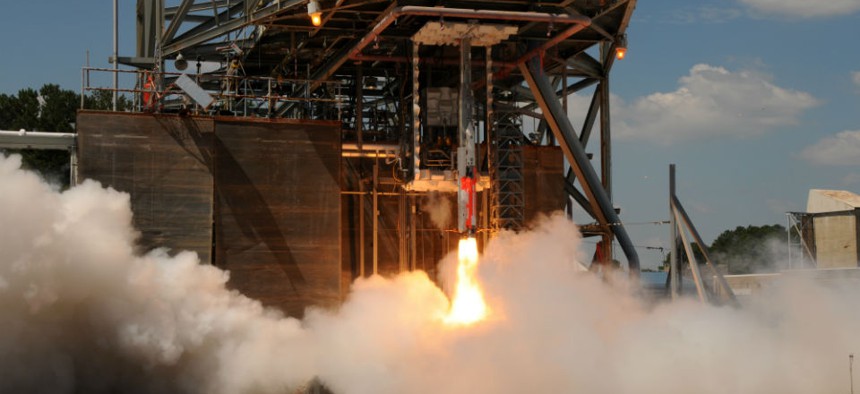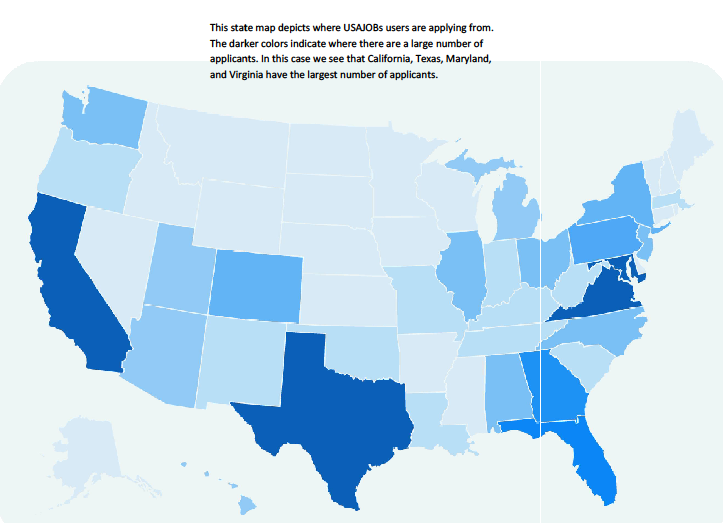
NASA engineers run tests in August to learn how loud the Space Launch System vehicle will be during liftoff. David Olive/NASA/MSFC
The Simple Solution to Hiring Tech-Savvy Talent That Agencies Might be Overlooking
OPM says agencies could be underutilizing authority to boost pay for highly-qualified STEM workers
The federal government has a lot of new, data-driven ideas for finding and recruiting potential science, technology, engineering and mathematics (STEM) employees, but it is now turning to the oldest incentive of all: money.
Office of Personnel Management Director Katherine Archuleta reminded agencies this week of their ability to use “critical position pay” to fill highly skilled jobs. As part of a larger effort to improve and grow the federal STEM workforce, OPM, in conjunction with the Office of Management and Budget and the White House’s Office of Science and Technology Policy, identified the pay boost authority as a “potentially underutilized flexibility.”
Offering increased pay could “enable the federal government to better execute designated STEM-related missions, become a more attractive employer to qualified STEM talent, and provide greater flexibility to reshape the STEM workforce to meet rapidly evolving mission needs,” Archuleta wrote in a memo to all federal agencies.
The salary bump can only be used when necessary to recruit or retain individuals “the agency determines are exceptionally well qualified for mission critical positions,” OPM noted.
Archuleta said OPM designated staff to help agencies determine if the authority is appropriate, and if they deem it so, to assist in completing the application necessary to institute it. Agencies must submit written requests that explain how the candidate is “exceptionally well qualified,” the reason other human resources flexibilities have failed and why the position is “critical to an important agency mission.”
In a fact sheet accompanying the memo, OPM said under the special authority, employees can typically earn up to the pay for the Executive Schedule level two grade, which is currently $181,500. In special circumstances, agencies can boost the critical employee’s pay to ES level one, or $201,700, which is what Cabinet-level agency heads earn. Once granted, agencies can continue to use the authority “as long as needed.”
Federal statute limits the number of employees who can be covered under the authority at one time to 800 individuals across government.
On Wednesday, the White House hosted about 50 STEM employees from federal agencies to “celebrate the key contribution of STEM professionals working in our government.” At the event, the Obama administration rolled out several tools and products to help hiring managers find high-quality STEM applicants.
The products included a “hiring managers portal,” a Web-based application that connects desired skills to potential applicants; a STEM employee directory, which is still in development; a STEM “data catalog” that allows individuals to analyze information related to job applicants; “data science ladders,” an online tool that provides employees with science and technology skills training; and an applicant dashboard, an analytical resource for hiring managers to visualize when they might lose out on highly qualified STEM-job candidates.
As an example of OPM’s data-driven efforts, it created the heat map below, which will help it focus in on areas that have a high volume of STEM applicants.

The White House and OPM hope to cultivate new STEM employees through student engagement, including a special branch of the Presidential Management Fellows program . They also plan to boost university partnership, further develop a STEM mentoring program and increase the use of senior level (SL) and scientific (ST) pay grade positions.
In a blog post Thursday, Archuleta said that taken together, the initiatives will allow the federal government to compete with the private sector for top STEM talent.
“I am committed to making sure that together with our partners across government, OPM will continue to innovate and expand the tools and resources we provide agencies so they can bring on board the best talent possible to serve the American people,” Archuleta wrote.
NEXT STORY: How Astronauts Vote From Space







